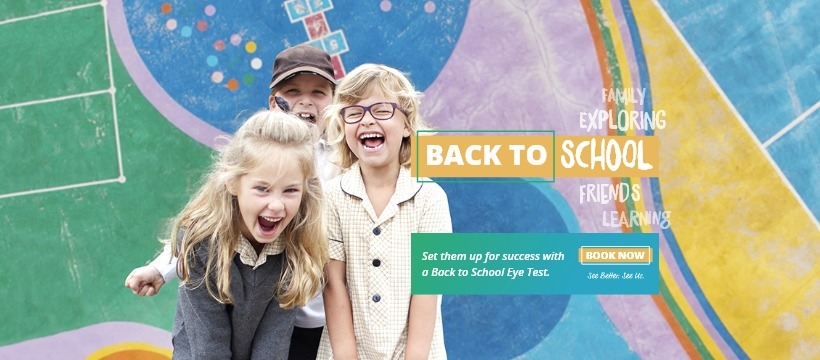Myopia Intervention

Myopia, known as short-sightedness, is a condition that results in blurred distance vision. Unfortunately, rates of myopia in children are steadily on the rise. This is in part due to the nature of modern living; with more time spent indoors focusing on devices and less time spent outdoors using distance vision.
Myopia management and intervention needs to start as early as possible, in order to delay the onset and slow the progression of myopia. We recommend that children have their eyes tested regularly, even if there are seemingly no signs or symptoms of visual abnormality. Kids should have their first eye test before they start school, and then every two to three years as they progress through their primary and high school journeys.
Unfortunately in Australia, 49% of children haven’t been to see an optometrist before their 9th birthday and 30% of all Aussie kids have never had their eyes tested. As a parent it is important to be proactive as children themselves may not realise they see things a bit differently to those around them, and in some cases, as with pre-myopia, there may be no symptoms at all.
There are several active intervention management options available to help improve eye health in myopic or pre-myopic kids; certain glasses lenses are available specifically designed for myopia management, and can be worn to correct vision; daily disposable contact lenses are suitable for children due to their soft lens design and disposable nature, and help to correct for myopia while slowing the progression of the condition; low dose atropine eye drops are administered to children at bedtime to potentially significantly slow the progression of myopia.
In addition to visiting your local optometrist, there are a number of healthy habits to implement at home that can help protect your child’s eyes. Firstly, it is important for kids to have balance in their worlds, for happy eyes this means incorporating outdoor learning and play into their daily routines for 90 minutes every day. This is known as balancing screentime with green time, and is one of the most important things children can do to help prevent the onset and progression of myopia. Additionally, all kids should have very limited exposure to hand-held electronic devices, especially infants. If they are using devices, good posture is important, with eyes at least 50 cm from the screen, as is good ambient lighting.
If you have concerns about your child’s vision, or just think it’s time for a check-up, book them an appointment to see one of our friendly optometrists!
To learn more about how myopia affects your child, head to our previous blog “Myopia Epidemic”







